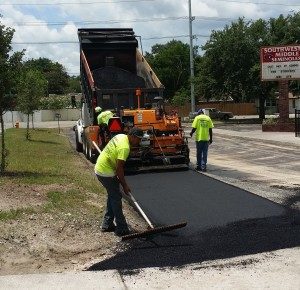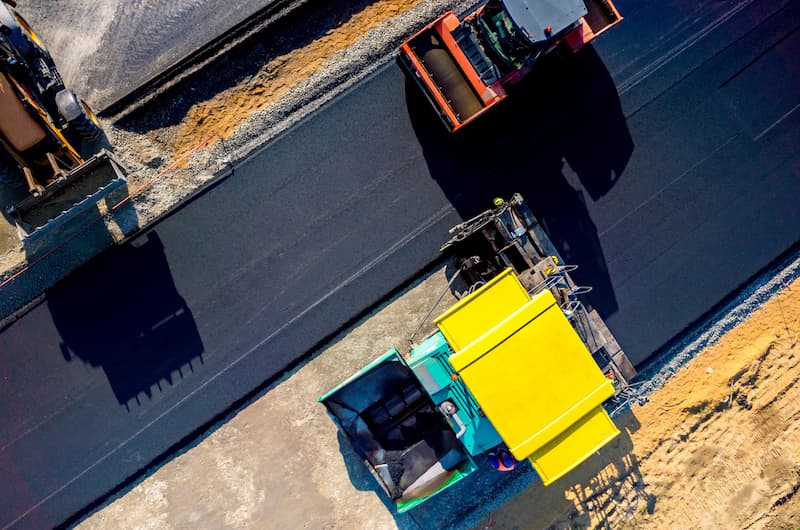The Of A1 Professional Asphalt & Sealing Llc
The Main Principles Of A1 Professional Asphalt & Sealing Llc
Table of ContentsFascination About A1 Professional Asphalt & Sealing LlcThings about A1 Professional Asphalt & Sealing LlcThe Ultimate Guide To A1 Professional Asphalt & Sealing LlcGetting The A1 Professional Asphalt & Sealing Llc To WorkA1 Professional Asphalt & Sealing Llc Can Be Fun For Everyone

The oil in a vehicle engine is not just oil. It includes a variety of ingredients to boost the automobile's efficiency. These consist of polymers, viscosity modifiers, warmth stabilizers, added lubricants, and put on additives. The REOB has all the ingredients that were in the waste oil in addition to the wear steels from the engine (mainly iron and copper).
By making several blends making use of different REOB examples and various asphalt binders, the variations mostly can be averaged out. Several States offered samples of well-known REOB structure to TFHRC researchers, who assessed the examples to contrast the percentage of included (recognized) REOB to the located (evaluated) quantity. The evaluations revealed a similar percentage of included and discovered REOB.
A1 Professional Asphalt & Sealing Llc Things To Know Before You Get This
None of those States recognized that the asphalt they were getting consisted of REOB. One State urged its examples had no REOB - https://ameblo.jp/a1asphaltseal/entry-12849151704.html.
Of the 1,532 examples examined, 12 percent had REOB, and some contained considerably high levels of it at 1020 percent. The highest degree was 34 percent in a sample from Texas, which TxDOT had made use of in a patching substance. This screening likewise disclosed the visibility of phosphoric acid in 11 percent of the examples, and 2 percent consisted of ground tire rubber.
Two years back at TRB's annual meeting, the Federal researchers held an REOB workshop and offered the findings of their lab analyses to a standing room-only group. Some agencies do not especially ban REOB, they do enforce physical tests that preclude its useeffectively a ban. Others do not outlaw it by spec, however have contracts with asphalt suppliers to stay clear of using REOB
Not known Incorrect Statements About A1 Professional Asphalt & Sealing Llc
A handful do enable REOB, some within particular limits. For instance, Ohio and Texas limitation levels to much less than 5 percent of the asphalt. To create a reputable examination approach that all States can use, the TFHRC researchers set up a round-robin examination strategy. The individuals are 11 State freeway agencies (Illinois, Massachusetts, Minnesota, Mississippi, Montana, North Carolina, Oklahoma, South Carolina, Texas, Vermont, and Wyoming), 2 independent screening labs, the Ministry of Transport in Ontario, Queen's University in Ontario, and an Ontario paving service provider.
In overall, the scientists prepared and delivered 720 blends. The individuals are examining the samples individually making use of the standards provided by the TFHRC researchers. The round-robin screening is almost completed, and TFHRC remains in the procedure of gathering the outcomes. The output will be a proposed AASHTO test technique that any kind of State can take on and utilize (asphalt repairs).
The sidewalk with REOB, which lies 0.6 mile (1 kilometer) from the pavement without REOB, has identical subgrade, website traffic density, and environment. However, the section of Highway655 with 5 to 10 percent REOB showed significant fracturing. In this instance, the existence of REOB was the identified root cause of splitting at a reduced temperatures.
An area of test sidewalk in Minnesota (MN1-4) located to have REOB likewise split too soon. The pavement done well for the initial 3 to 4 years, yet then began to fracture.
A1 Professional Asphalt & Sealing Llc for Dummies
The tests were not extensive, however they showed that at degrees of 6 percent or even more, the tensile toughness of the asphalt dropped significantly. At a degree of 3.5 percent REOB, the variant in the physical examination methods was more than the result of REOB. In reality, it was tough for researchers to analyze whether REOB was existing.

One binder criterion taken into consideration is the difference between the low temperature essential specification temperature for tightness (S) in the flexing beam rheometer and the bending beam rheometer creep slope (m-value) kept in mind as Tcritical. TC = TC (S) TC (m-value). Examination of this specification is still recurring. Two independent research groups, one from AASHTO and the various other from the Asphalt Institute, wrapped up that more research is needed on making use of REOB in asphalt.
Formerly, visit their website all asphalt testing measured design residential properties such as tightness. These tests do not reveal what materials had been contributed to the asphalt. One sample received throughout the TFHRC research study had a very weird analysis. The example had the complying with test outcomes: Superpave PG 64-28 with a high temperature quality of 67.3 Tcritical on the bending beam of light rheometer was 6.7 degrees Celsius.

What Does A1 Professional Asphalt & Sealing Llc Mean?
These outcomes demonstrate there are weaknesses in the standardized engineering screening methods that may be manipulated. The manufacturer may have an economic benefit and the item passes all the standard examinations, but the item may not be advantageous to guaranteeing lasting efficiency. To resolve this problem and the growth of new asphalt additives and extenders, TFHRC is starting a study program to make use of portable spectroscopic tools, x-ray fluorescence spectroscopy, and Fourier transform infrared spectroscopy to allow analyses to be done in the area as opposed to needing to take samples back to the laboratory.